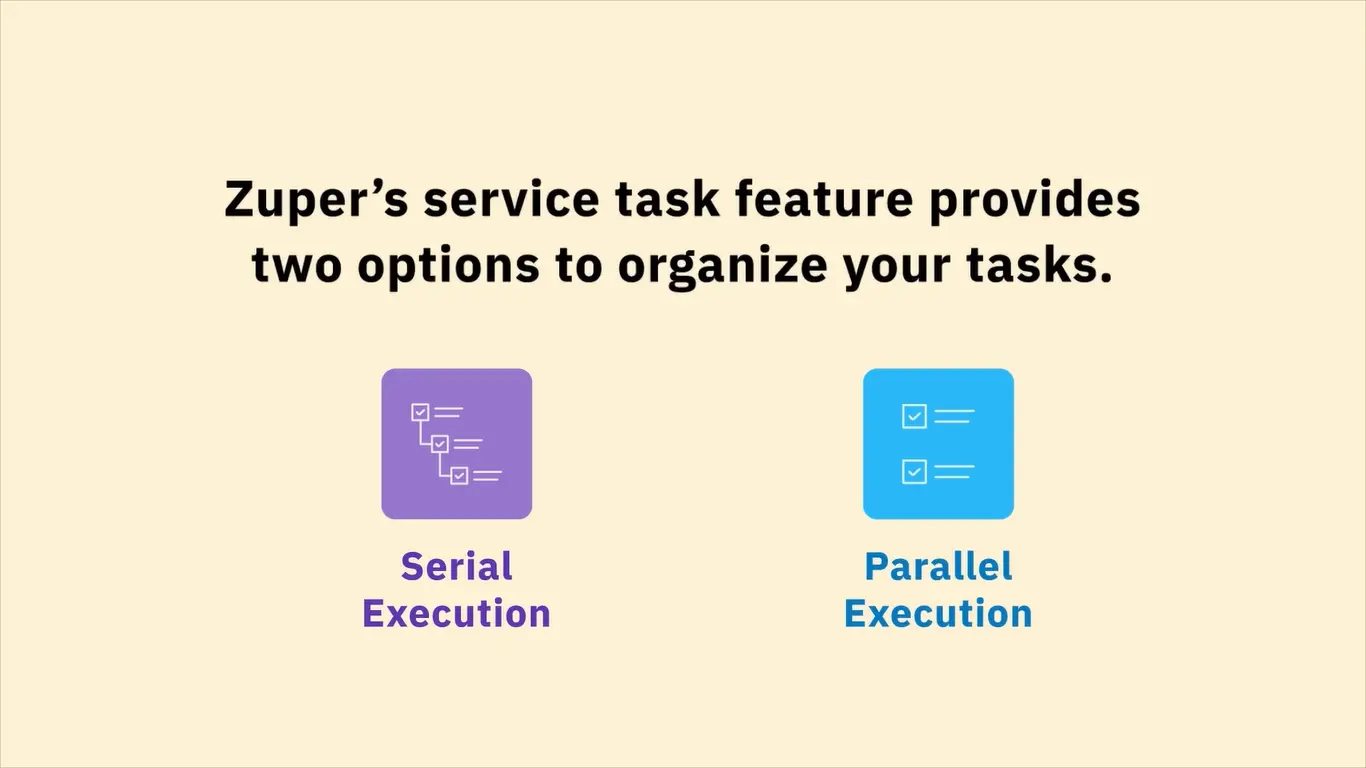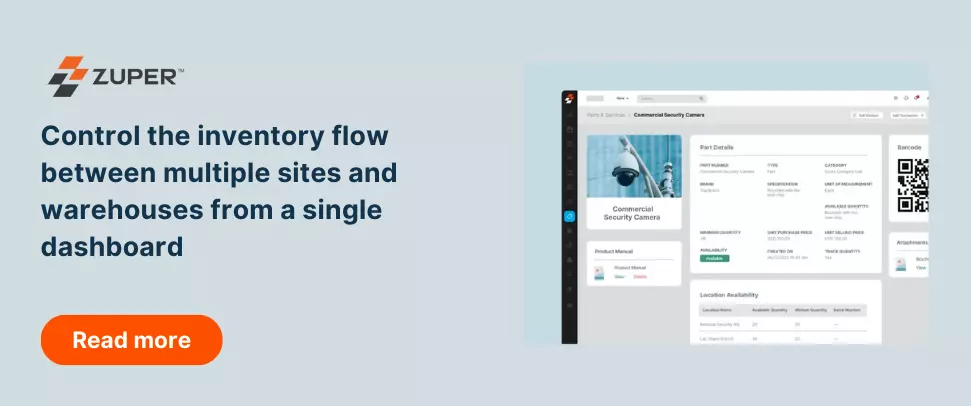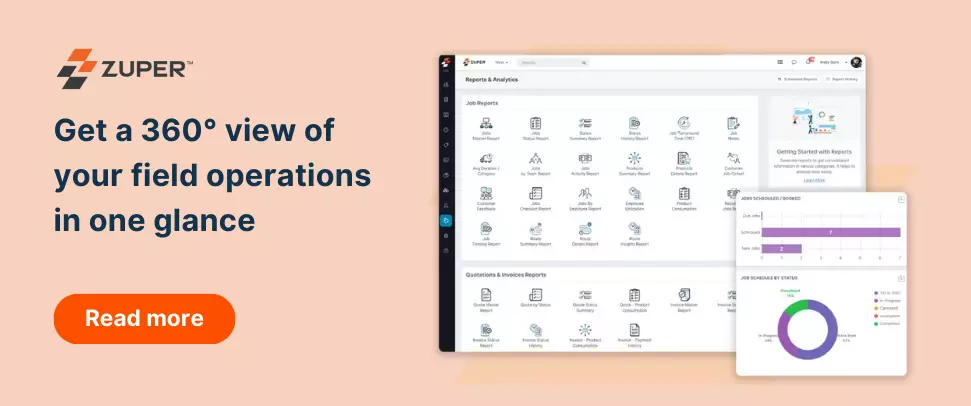Service Task is an advanced technique in the field service industry that helps to optimize workflows. Field operations are not easy, but there are software solutions that can help. Customer Relations Management, Field Service Management, and Integrations with other software platforms can all help in prioritizing tasks and managing complex projects.
Not all jobs are the same, and managing the task requirements of each project can be a headache. Let’s say there is a service request to clean a five-storey building. To complete this project, you can assign one technician to each story. By dividing a larger project into smaller job assignments that can be completed by individual technicians, you are able to complete a complex project quickly and easily.
In this article, you will learn why a Service Task feature is a must-have when choosing Field Service Management software. We will show you how, using Service Tasks, you can streamline your workflows and boost your workforce efficiency. We will also look at some of the benefits of using FSM software, such as predictive maintenance, IoT, remote assistance, and reporting and analytics features.
Task management: an overview
Here is the greater picture: there is a lot of confusion surrounding tasks for technicians. Certain tasks cannot be done without the completion of another task. Let’s take solar panel installation, for example. Solar panel installation cannot be done without solar surveying. Here, complex task needs to be broken into smaller sequential tasks. This can be done using the Service Task feature. Without Service Tasks what happens is technicians become frustrated for not being able to finish a work. Employee productivity is hindered by this.

Approaching job assignments from a Service Task perspective can help you optimize the time spent on project-related tasks. For example, you receive a request for maintenance of a company building. No doubt it is a huge project, but unlike solar installation, each part of this project is not dependent on some tasks being completed before starting others. Because each of these smaller jobs is independent, you can easily split your team, assigning some to work on HVAC maintenance while others check on the plumbing, electricity, and general cleaning. By completing several jobs in parallel, the whole project is completed faster and more efficiently.
So, confusion. wasted time, and prioritization of tasks are the problems at loose, and the Service Task feature fixes it like glue.
Serial and parallel execution of jobs
What is a Service Task? It is a feature that helps service business boost their efficiency and reliability. Each task you perform has numerous parts. Keeping tabs on them and tracking their progress is not always easy. You have a lot to take care of every day, and the Service Task feature helps you stay on track by dividing larger projects into smaller, more manageable tasks. By dividing projects into smaller parts, technicians can keep track of multiple projects simultaneously, minimizing confusion regarding which work has been completed and what is still in progress.

Using service requests, you can break down your primary tasks into two types: serial execution and parallel execution. In serial execution, tasks are completed in a specific order. You cannot move to the next subtask without first completing what came before it. A job is considered finished only when all subtasks are checked off. Zuper adds a helpful touch here by letting you use inspection forms as checklists, ensuring all criteria are met before moving on.
Parallel execution, on the other hand, offers more flexibility and efficiency. It lets multiple technicians work on different tasks at the same time. Parallel execution is a great time saver. Since multiple subtasks are done simultaneously, the job is completed faster.
Reclaim the time lost with FSM
The importance of Service Tasks is clearly visible from the previous thought. Further, it is understandable that the Service Task feature is a way for service businesses to improve efficiency and reclaim the time that has been lost in the field. So, the Service Task is one more reason for you to get Zuper FSM software. Zuper’s newly added Service Task feature lets you,
- Define the tasks that need to be completed in order while working on a job.
- Add a set of Service Tasks to your account or to a job category that is very common for your business and use them in jobs when needed.
- Manage complex and composite jobs by splitting them into Service Tasks.
- Relate a predefined task or group of tasks to the job.
- Add an ad hoc task to the job and manually set an assignment for any task.
- Link an asset and inspection form to Service Tasks.
Maximize resource allocation
Service Tasks play a crucial role in maximizing resource allocation. They break down complex work orders into smaller, manageable steps, improving clarity and communication between technicians and dispatchers. By defining task sequences, you ensure that subtasks are completed in the correct order, helping technicians follow the right procedures. Additionally, you can assign the necessary resources, such as technicians, tools, and materials, to each Service Task, ensuring everything needed is available for successful completion.
Double your efficiency with a mobile app
Double your Service Task efficiency with a mobile app that empowers technicians in the field. With mobile access, technicians can easily view Service Task details, instructions, and schematics on their devices, eliminating the need for paper-based work orders and ensuring they always have the latest information at hand. Even in areas with limited internet connectivity, offline functionality allows technicians to access and update Service Tasks, minimizing disruptions and keeping them productive. Progress tracking features enable technicians to update the status of each subtask as they complete it, providing real-time visibility into job progress for dispatchers and managers.
Customer relationship management (CRM) integration
Service Tasks can connect with CRM systems, creating a unified platform for managing customer interactions. This integration allows technicians to access a complete service history for each customer directly within the Service Task. With past service details readily available, technicians can understand recurring issues, identify potential solutions faster, and personalize their approach for enhanced customer satisfaction.
Optimize Service Tasks with FSM advanced features
1. Predictive maintenance strategies
Imagine a scenario where an air conditioning unit frequently requires service for a clogged condensate drain line. By analyzing historical Service Task data within the FSM software, you can identify this recurring subtask. This allows you to pre-define “Clean Condensate Drain Line” as a subtask within the master Service Task for “Air Conditioning Unit Maintenance.”
Benefits
- Reduced downtime: By proactively scheduling cleaning as a subtask during routine maintenance, you can prevent clogged drains from causing unexpected equipment failures and system downtime.
- Improved efficiency: Pre-defined subtasks eliminate the need to manually add them each time a similar service request arises, streamlining task creation and technician preparation.
- Enhanced technician training: New technicians can quickly learn about frequently encountered issues by referring to pre-defined subtasks and associated resources.
For example, here HVAC company can utilize Service Tasks to manage their air conditioning maintenance procedures. Analyzing Service Task data reveals that “Clean Condensate Drain Line” appears as a subtask in over 40% of completed air conditioning maintenance jobs. This subtask is pre-defined within the master Service Task, ensuring it is automatically included in all future air conditioning maintenance schedules. This proactive approach helps prevent clogged drains and associated equipment malfunctions.
2. Remote assistance for field technicians
Breaking down a Service Task into subtasks allows for targeted remote assistance. Imagine a technician encountering a faulty circuit board during a refrigerator repair. Traditionally, they might need to call a senior technician for guidance. However, with Service Tasks, they can request help specifically for the “Diagnose Faulty Circuit Board” subtask within the platform.
Benefits
- Faster problem resolution: Senior technicians can quickly understand the specific issue by focusing on the relevant subtasks. This targeted assistance reduces troubleshooting time and expedites repairs.
- Improved first-time fix rates: Remote specialists can guide technicians through specific subtasks, increasing the chances of resolving the issue during the initial visit, and minimizing return trips.
- Knowledge transfer and skill development: Technicians can observe how senior technicians handle complex subtasks remotely, fostering knowledge transfer and skill development.
For example, an appliance repair company can use Service Tasks to break down refrigerator repairs into subtasks like “Diagnose Cooling Issue,” “Inspect Compressor,” and “Replace Faulty Circuit Board.” During a service call, a technician identifies a cooling problem and requests remote assistance for the “Diagnose Faulty Circuit Board” subtask. A specialist connects remotely, guides the technician through diagnostic tests, and confirms a faulty circuit board. With remote guidance, the technician successfully replaces the board and resolves the issue during the first visit.
3. Right parts at the right time with inventory management
When you break down a Service Task into subtasks, the specific parts needed for each stage can be identified and linked to the overall Service Task. This ensures technicians have the necessary inventory on hand to complete the job efficiently. Continuing with the refrigerator repair example, by linking the “Replace Faulty Circuit Board” subtask with the specific circuit board model needed, you can ensure the technician has the correct replacement part in their inventory before arriving at the customer’s location.
Benefits
- Reduced delays: Having the necessary parts readily available eliminates the need for technicians to return to the warehouse or wait for parts to be delivered, minimizing job delays and improving customer satisfaction.
- Optimized inventory management: FSM software can track parts usage based on linked Service Tasks, allowing for informed inventory management decisions. This reduces the risk of overstocking or understocking parts.
- Improved first-time fix rates: With readily available parts, technicians are more likely to resolve issues during the initial visit, enhancing first-time fix rates.
Take a look at how an appliance repair company can link the “Replace Faulty Circuit Board” subtask with the specific circuit board model compatible with the refrigerator model being serviced. When the technician requests remote assistance in diagnosing the circuit board, the FSM software automatically suggests adding the specific circuit board model to the Service Task inventory. This ensures the technician has the correct replacement part readily available to complete the repair on the first visit.
4. Reporting and analytics for data-driven task optimization
Data collected for each subtask within a Service Task can be a treasure trove for improvement. Analyzing completion times and resources needed for each subtask in the “Air Conditioning Unit Maintenance” Service Task, for example, can reveal valuable insights.
Benefits
- Identify bottlenecks: By analyzing completion times for individual subtasks, you can identify areas that consistently take longer than expected. This might indicate a need for additional training, revised procedures, or specialized tools for specific subtasks.
- Optimize task structure: Data analysis can reveal if certain subtasks are better combined or if the overall task breakdown can be improved for better efficiency.
- Benchmark performance: Comparing completion times and resource usage across different technicians or teams servicing similar equipment can identify areas for improvement and opportunities for knowledge sharing between high and low performers.
Here is an example: HVAC company analyzes Service Task data for “Air Conditioning Unit Maintenance.” They discovered that the “Clean Condensate Drain Line” subtask consistently takes longer than expected for some technicians. Upon investigation, they identify that these technicians are using a less efficient cleaning method. By revising the subtask instructions with the recommended cleaning procedure and providing additional training, the company streamlines the cleaning process and reduces completion times for this subtask.
5. IoT integration for real-time insights for smarter subtasks
The Internet of Things (IoT) allows equipment to transmit data about its health and performance. Service Tasks can be designed to leverage this data. Imagine an “Air Filter Replacement” subtask within the “Air Conditioning Unit Maintenance” Service Task. By integrating sensor data from the air conditioning unit, the Service Task can display the current filter life remaining.
Benefits
- Predictive maintenance: Real-time sensor data can provide insights into equipment health and predict potential issues before they arise. This allows for scheduling preventative maintenance tasks based on actual equipment data, rather than relying on fixed intervals, optimizing maintenance schedules and resource allocation.
- Informed decision-making: Technicians can access real-time data relevant to specific subtasks, allowing them to make informed decisions during the service call. For instance, sensor data might indicate a clogged filter even before a technician physically inspects it, prompting immediate replacement.
- Improved customer satisfaction: By proactively addressing potential issues through data-driven maintenance, you can minimize equipment downtime and improve customer satisfaction.
Example: The HVAC company integrates air filter lifespan data from IoT sensors into the “Air Filter Replacement” subtask within the “Air Conditioning Unit Maintenance” Service Task. During a scheduled maintenance visit, the Service Task displays that the air filter is nearing its end of life. Based on this real-time data, the technician proactively replaces the filter, preventing potential airflow issues and equipment overheating in the future.
Conclusion
Creating a consistent workflow is now possible using the Zuper Service Task feature. Start prioritizing tasks like a pro and put an end to task management nightmares. With Zuper’s Service Task solution, you can reduce errors and simplify complex project management. Start your free trial today.
Step up and be a force for good. For every T-shirt you wear, over 700 gallons of water is consumed. You hold the power to reclaim gallons of water with every garment you wear. Choose minimalism; Save water. Mindful closet for a sustainable future!






